Beverly Scott's Blog, page 3
August 25, 2020
Leaving Facebook
I am considering leaving Facebook. I have wrestled with the decision for a few months now. Some of my issues are values-based and some are political. Overall, I am unhappy that Facebook allows extremist groups to post hate speech and lies to promote racism and divisiveness. Worse, Facebook allowed its platform to be used to manipulate our last presidential election. We’ve heard frequent news reports that Russia has a strategy to manipulate our upcoming election as they reportedly did in 2016. Is Facebook allowing this to happen again? Interference in the most significant right in our democratic process, to vote, is a real threat to our democracy.
Divisiveness
I fear that the hatred and divisiveness promoted on a platform followed by millions of followers, leads to the political stalemate. We see Congress and our elected leaders are unable to reach across the aisle, find common ground to compromise, and to govern. Plus, the New York Times reports the rise of right-wing extremist QAnon, a conspiracy group which has attracted hundreds of thousands, some say millions, of followers on Facebook. This group “believes in, among other things, a ring of Satan-worshiping, child-trafficking criminals led by prominent Democrats.”
QAnon followers hack into organizations’ legitimate campaigns on Facebook, such as “Save the Children.” Thus, they blur the lines between real concerns about human trafficking and conspiracy mongering. Followers then “shift the conversation to baseless theories about who they believe is doing the trafficking: a cabal of nefarious elites that includes Tom Hanks, Oprah Winfrey and Pope Francis.” Shockingly, many people accept such baseless theories. So much so, that a QAnon supporter will likely win election to Congress from Georgia this year. Why is Facebook allowing such lies and misinformation?
Note: Some QAnon presence has finally been removed from Facebook https://www.bbc.com/news/technology-53692545.
Benefits and Drawbacks
Yet, there are benefits to being on Facebook. For example, I have many friends with whom I communicate solely on Facebook. I often post photos of my vacations, family events or other life milestones. With my author’s Facebook Page, I promote my book, send out blogs and book reviews, and promote writing. If I leave Facebook, I lose all these benefits. Leaving Facebook is a big decision.
But, I wonder, do I need those benefits? If I leave Facebook, I will miss the news shared by friends and the opportunity to share news with them. If I ever travel again, I will miss the opportunity to share my photos. I ask myself, how important are these benefits? In fact, given the pandemic, I am doing fewer celebrations with friends and family or marking the milestones in my life. I have retired and do not expect to write another book, nor blog as often. So, I am not putting energy into book promotion. I still have my website to post blogs and reviews. Do I really need a Facebook Author Page?
Boycott
Several times in my life, I’ve boycotted a product or a company because of its unethical, immoral or illegal action. The actions of Facebook seem to fall in that category as Zuckerberg has refused to prevent messages of outright lies. Lies abound on the pandemic, the Black Lives Matter protests, the Presidential election or the baseless allegations of QAnon. He claims that Facebook is not an “arbiter of truth.” Further, it is in the interest of the public to see what political leaders are saying. That might explain why Facebook allows President Trump to post lies and misinformation.
But many others who are not political leaders use Facebook to spread lies, groundless accusations, and distorted data. It seems Facebook disingenuously hides behind its facade of neutrality. Our advanced economy still uses the tools of research and science. An educated population, for decades, has depended on the results of science and research for substantiated facts and data. Facebook can also use those results to prevent messages of disinformation, outright lies, hate and bias. Why does it not do so?
Democracy Threatened?
This kind of distortion characterizes authoritarian societies that use lies and misinformation to install dictators. I want to live a democracy. Don’t you?
Others also believe Facebook has not done enough to restrict extremists and conspiracists who spread lies, bias and hate. In addition, Facebook has not done enough to prevent harassment on line. A Pew Research Center survey in 2017 reported in the New York Times, that 40% of Americans experienced on-line harassment. Three-fourths of it occurred on Facebook. Facebook has been criticized by advertisers, civil rights leaders and even its own employees. And, the New York Times reports that State Attorneys General from 20 states have demanded Facebook do a better job.
Will Facebook continue to allow these uses of its platform? Will it allow other countries, such as Russia, to manipulate the upcoming election in November?
Note: Bowing to pressure, FB has released a set of Community Standards. I am skeptical. Will it make any difference?https://www.facebook.com/communitystandards/introduction
Bottom line about leaving Facebook: do I want to continue to be involved and participate with it? Are the benefits I receive worth it? Does it make any difference? What is your position?
The post Leaving Facebook appeared first on Bev Scott.
August 18, 2020
Book Review: “All the Light We Cannot See” by Anthony Doerr
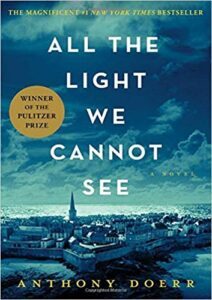
All the Light We Cannot See is a beautiful, masterfully written work of historical fiction. It tells the stories of two young people, a blind French girl, Marie Laure and an orphan German boy, Werner. Marie Laure lives with her father, a master locksmith at the Museum of Natural History in Paris. Her family flees as the Nazis occupy Paris. But, they escape with what may be the museum’s most valuable and dangerous jewel. They ultimately find shelter with Marie Laure’s great uncle in his house by the sea, in Saint-Malo.
Werner lives in a German mining town in an orphanage with his sister under the eye of the French-speaking “house mother” Elena. Werner becomes intrigued with a radio and becomes an expert in repairing and building radios. With this skill, he ultimately tracks the French Resistance for the Nazis. Hence, the lives of Marie Laure and Werner intersect in occupied France.
The story is deeply moving, rich in detail with vivid descriptions and imagery of sensitivity and incredible kindness as well as unspeakable cruelty and horror. I was very confused in the beginning until I began to understand what the author was doing as he switched the focus of the character, the time and the place from chapter to chapter. Despite that confusion, I loved All the Light We Cannot See and highly recommend it.
The post Book Review: “All the Light We Cannot See” by Anthony Doerr appeared first on Bev Scott.
July 29, 2020
Book Review: “She Said – Breaking the Sexual Harassment Story that Helped Ignite a Movement” by Jodi Kantor and Megan Twohey
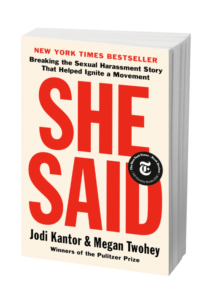
In 2017 when Jodi Kantor and Megan Twohey began to investigate Harvey Weinstein, women were experiencing sexual harassment, despite the laws against it. Women had achieved high-level positions and were highly educated. They had worked non-traditional jobs and broken barriers. But they also endured gropes, leers, propositions, physical advances and rape. Women who spoke up faced dismissal, demotion or humiliation. Sadly, sometimes a woman decided her best option was to accept a financial settlement in exchange for silence.
In the fall of 2017, the Weinstein story “broke through the dam” of silence. Women told their own stories in amazing numbers. Thus, men had to face the accusations. This book lays out the silent contracts and secrecy under which many women suffered. Meanwhile, their perpetrators continued with their successful careers. In shockingly frequent fashion, a so-called feminist lawyer would negotiate an outcome. In brief, the victim learned her best option was silence rewarded with a financial settlement. This allowed Weinstein in particular to continue to operate with impunity. The secrecy also challenged the authors as they pursued journalistic accuracy. As reporters, Kantor and Twohey obtained secondary confirmation to each revealed story.
Summary
She Said tells the stories of multiple women who Harvey Weinstein harassed and the painful aftermath they suffered. Further, people around Weinstein knew about his blatant behavior and did nothing. Through their accounts, we follow Kantor and Twohey as they journey to uncover the truth and overcome barriers Weinstein constructed. They held to principles of good journalism during the time when accusations of “fake news” undermined the societal consensus of truth.
This book reveals the high-water mark of sexual harassment. It hid behind denials, legal gymnastics, bought-off silence and cultural dismissals. I highly recommend She Said.
The post Book Review: “She Said – Breaking the Sexual Harassment Story that Helped Ignite a Movement” by Jodi Kantor and Megan Twohey appeared first on Bev Scott.
July 14, 2020
Coasting: My Evolving Thoughts on Racial Justice

Coasting is avoidance. It has been several months since I’ve sat down to write a blog. But the murder of George Floyd and the demonstrations around the nation and the world have prompted me to contemplate and reflect. I have captured some of my thoughts in this blog. As always, I open my mind and ears and solicit your thoughts as well.
One of my friends demanded that we “discuss the rampant and blatant killing of Black people for the mere act of living. For jogging, for resting in their apartments, for stopping at a traffic stop, for not resisting arrest yet being held for almost 9 minutes, handcuffed, with a knee on his neck, until his death.”
Coasting
I have been coasting, influenced by the liberal bubble that is San Francisco. Feeling comfortable that we have progressed with our police and justice system and that city government has continued to address the issues. Our city built a legacy of resistance against the oppression of LGBTQ people. We ignited the acceptance and legalization of gay marriage.
I worked as a social justice activist for decades earlier. I saw myself as anti-racist. Thinking I had made my contribution, I could retire. Besides, I was tired. But now my heart is breaking to feel the pain, the sorrow and the tragedy displayed before me. I was not paying attention…to so many things. The enormous income and education inequality gap; the ways in which the police are shielded from accountability for their racial abuse, aggression and violence; how systemic and institutional racism continues to infect every aspect of our society and culture. Sadly, the work seems unending and daunting.
Brutality “is in the DNA of the systems of control.”
Hatred, bigotry and white supremist attitudes don’t just characterize those who are from the South, the uneducated or the radical right. Instead, white people who consider themselves, like me, progressive, have remained too quiet and too passive. We have enjoyed our white privilege. We have allowed institutional racism to limit, restrict, marginalize, and repress, people of color. Institutional racism lives in the DNA of every aspect of our society. Another curve to be flattened is the upward march of income inequality which impacts having enough to eat, housing, health care, education, employment and more. We have not been active anti-racists. We have been coasting.
The DNA of white supremacy allows police to put a knee to a black man, handcuffed and lying on the ground. That DNA rooted in four hundred years of brutal racism, segregation and slavery has monetized the subjugation of black and brown people today.
To flatten the curve, close the inequality gap and deliver justice will be complicated. When I think about it, I feel overwhelmed. What can I do? Yet, unless we white Americans are willing to take a collective stand to acknowledge our privilege and the cost of that privilege on black and brown people, the deaths of George Floyd, Breonna Taylor, Ahmaud Arberry and the many others who have died at the hands of the police, vigilantes and thugs will have been in vain.
There is much we must do:
Study and help all of us learn how those four hundred years of racism play out today.Learn how the insidious DNA of racism embeds in each of us and become actively anti-racist.Understand the intersection of racism, sexism, classism and homophobia cultivated by the need for power and control.Explore reparations for slavery and the exploitation since. Reparations includes monetary payments as well as sharing skills, knowledge, connections, and access.Pass bi-partisan legislation to end racial violence and demand police accountability.Explore alternatives to address the social, mental and physical health issues that we expect the police to handle and move those responsibilities and the budget for them to other government and non-profit agencies.Reinstate civil rights policies rolled back by the Trump administration and work hard to establish social justice.Work to flatten the curve in income, employment, education, housing, health care.Commit to do what it takes to create a just and equitable future for everyone.We must do more to speak up and advocate as anti-racists. We must have hope.
Finally, I commit to act
Thus, I conclude that I cannot keep on coasting. Rather, I will do more to raise my voice, take a stand and work to change our racist systems.
I commit to explore and learn how racism is embedded in me. I am learning about and getting involved in support for reparations as well as support for making changes in policing in my own community.
We need hope. The work and the learning continue.
The post Coasting: My Evolving Thoughts on Racial Justice appeared first on Bev Scott.
July 1, 2020
“Story Power, Secrets to Creating, Crafting and Telling Memorable Stories” by Kate Farrell

What is story power? The power of story is articulated in the foreword written by Susan Wittig Albert and guided by the examples, the process and the steps described by the author, Kate Farrell. Storytelling is so much apart of our lives as we share experiences, give advice and educate our children. We tell ourselves stories to explain our lives. We collectively tell stories and realize that others have common experiences. In the process we heal our pain, understand ourselves differently, discover community and even find a new identity.
Storytelling is art
“We are all a story, a life story.”
Although all of us tell stories, we may not all realize how our stories can engage the listener, offer healing, be more powerful, and have greater impact. Farrell tells us how. She shares diverse examples to reveal the many possibilities and types of stories. These stories not only engage the reader but they help us understand the process of creating, crafting and telling stories. She offers exercises and prompts and delineates the “Seven Stops to Storytelling” demystifying the art of entertaining and meaningful storytelling.
I highly recommend this lively, well-written primer to becoming a master storyteller.
The post “Story Power, Secrets to Creating, Crafting and Telling Memorable Stories” by Kate Farrell appeared first on Bev Scott.
June 12, 2020
Book Review: “Liberation of Paris: How Eisenhower, De Gaulle and Von Choltitz Saved the City of Light” by Jean Edward Smith
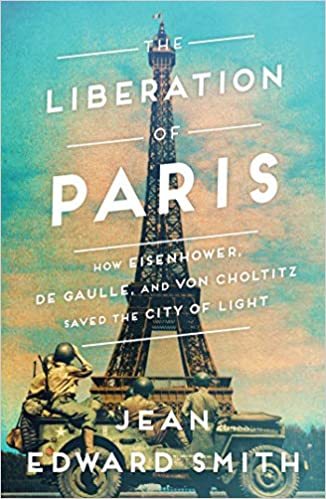
Liberation of Paris by historian Jean Edward Smith, tells a fascinating story of the efforts of three key men that resulted in the liberation of Paris in World War II. The Allies swept across northern France after they broke through the German lines in Normandy. They were pursuing the German army intending to cross the Rhine and enter Germany before winter. They had no intention of liberating Paris. At the same time Parisians defied the Germans and began their own efforts of liberation. This was possible because the German commandant in Paris, Dietrich von Choltitz believed the war was lost to the Germans. He also believed that Paris should not be destroyed. So, he defied Hitler’s orders and schemed to surrender the city to the Allies.
Charles de Gaulle, a leading figure in the Free French Government, feared that the partisan conflict would leave the communists in control. Thus he urged General Dwight D. Eisenhower to divert forces to Paris. President Roosevelt apparently strongly disliked de Gaulle, and Eisenhower’s staff disapproved of taking time to liberate Paris. Regardless, Eisenhower agreed with de Gaulle and wanted to position him to lead France after the war.
Smith masterfully describes the unfolding of this story. The author offers an inside view to the influences that impacted the outcomes of the war. He weaves the stories of the interactions, influences and connections of the three men whose key decisions saved the city of Paris. However, the Paris Liberation potentially extended the length of the war. If you like history you will enjoy this dramatic true story.
The post Book Review: “Liberation of Paris: How Eisenhower, De Gaulle and Von Choltitz Saved the City of Light” by Jean Edward Smith appeared first on Bev Scott.
June 1, 2020
Book Review: “Inheritance, a Memoir of Genealogy, Paternity and Love” by Dani Shapiro

Inheritance by Dani Shapiro, describes her emotional journey when she discovered through DNA testing that she was not related to her older sister, Susie. Susie was the daughter of her father from an earlier marriage. The older sister looked like her Jewish father who Shapiro always revered. Instead, she was different…pale skin, blond hair and blue eyes. She fielded questions as she grew up about not looking Jewish. There was no doubt about Susie’s paternity, only her own. They were “not sisters,” but rather “no kind of sisters.” The DNA result was not a mistake.
All of her life she had felt there was something amiss. She had known there was a secret. She just hadn’t known she was the secret. Her father was sorrowful and seemed to carry pain that she couldn’t fathom. She was different, an outsider. Something had not been right.
With the help of her husband, Shapiro launches her search to find the unknown “cousin” who was displayed in her DNA report. The memoir describes her emotional journey and the challenges of contacting her unsuspecting relative who may not want to get involved with newly discovered relatives.
Having journeyed on my own genealogical path, I found this story fascinating. Dani Shapiro, a professional writer, engages the reader in her quest to uncover the family secret and the emotional challenges the truth reveals. This book will interest others who have pursued genealogy research, explored their own surprising DNA results or just wondered about a family secret.
The post Book Review: “Inheritance, a Memoir of Genealogy, Paternity and Love” by Dani Shapiro appeared first on Bev Scott.
April 1, 2020
Book Review: “The Secrets of Mary Bowser: A Novel” by Lois Leveen

Mary Bowser was born into slavery in Richmond, Virginia before the Civil War. She fortunately grew up knowing both of her parents. Her mother worked as a house slave in the Van Lews mansion. Her father lived nearby, working as a blacksmith. Also fortunate, Bet, the daughter of the Van Lews, saw how bright and intelligent Mary was. Since Bet opposed slavery, she taught Mary to read. After freeing Mary and her mother, Bet Van Lews paid to send Mary alone to Philadelphia to become educated. Mary struggled to adjust to life as a free Negro without the guidance of her parents. Through a good friend from school she became involved in the Underground Railroad.
A Union spy during the Civil War
After finishing her education and reaching adulthood in Philadelphia, Mary realizes that supporting the individual Negroes efforts to escape slavery is not enough. And so, she returns to Richmond not just to be near her father who is still enslaved but to help the Union cause to free the Negro. She joins the cause as a Union spy. Mary pretends to be an ignorant, uneducated slave girl for the wife of Confederate President Jefferson Davis. Once the Civil War breaks out, Mary provides valuable espionage to the Union side successfully masquerading as a witless slave.
Author Lois Leveen writes well and provides historical insight. Through Leveen, we enter into the controlled and restricted life of slaves in Richmond. Plus, we then learn about the racist humiliations the free Negroes face in Philadelphia. I found the book engrossing, educational and historically accurate. Leveen creates a personal story within the historical backdrop of the Civil War and the characters of real people who lived at the time. Indeed, Mary Bowser actually was a woman born into slavery who became a Union spy; but as the author describes, history doesn’t provide much information about women, African Americans, or slaves.
If you like historical fiction and enjoy learning more about our own American history, I highly recommend this book. For more information, go to Author Lois Leveen’s website.
The post Book Review: “The Secrets of Mary Bowser: A Novel” by Lois Leveen appeared first on Bev Scott.
March 16, 2020
Book Review: “Last Boat Out of Shanghai” by Helen Zia
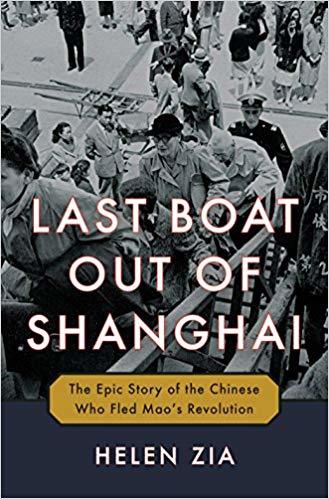
Helen Zia has written a meticulously researched book with colorful and detailed descriptions of Chinese culture, politics and family life. She centers her story on four young people living in the sophisticated, westernized city of Shanghai beginning in the late 1930’s before World War II. Zia uses the lives of these four people to represent life in Shanghai before the exodus. She then follows them as they flee the Communist takeover in 1948. Zia provides intimate details about their choices to leave the tumult in Shanghai. She details the risks they took to seek an uncertain life as refugees in the United States, Taiwan or Hong Kong. And then, she follows their struggles with loneliness and regret as they seek financial stability and professional credibility.
The daughter of immigrants from China herself, Helen Zia, interviewed scores of members from the last generation to flee before the exit was closed by the Chinese Communists. Through her four representative examples, she provides us with detailed descriptions not only of their lives before their exodus but also where they fled and how they managed to survive. These are four moving stories of strength, persistence and personal triumph.
Zia is writes masterfully with clarity as well as suspense. She provides the reader with exquisite portraits of life in Shanghai. She takes us through times before and during World War II as well as the tumultuous years before the Communist takeover. We experience the fear, doubt, guilt and anger of the refugees. We are with them as they flee for their lives, risk uncertain futures and search for safety, stability and acceptance. I highly recommend this book.
The post Book Review: “Last Boat Out of Shanghai” by Helen Zia appeared first on Bev Scott.
February 27, 2020
Book Review: “Where the Crawdads Sing” by Delia Owens
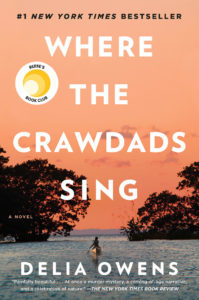
“You have to read this book!” I was urged by friends and colleagues multiple times. Where the Crawdads Sing is the debut novel by a wild-life scientist, Delia Owens. It is now a best seller.
As a young girl, Kyla’s mother abandons her. Eventually her brother and finally her father also abandon her. She thus lives alone in a cabin in the swamp. She hides from the truant officer and fears everyone. Gradually, she learns to survive alone and finds a friend in “colored town,” who does not pass judgment and instead provides both support and guidance.
Unwilling to go to school and be harassed and taunted by the school children as the “Marsh girl,” she does not know how to read until she meets Tate. A compassionate young man, he connects with her gently and sensitively. He offers to teach her to read.
With her own curiosity and intimate knowledge of the marshlands surrounding her cabin, she observes, reads and learns. She becomes an expert able to draw, understand and explain the ecology and the many biological creatures around her. She publishes books and becomes a recognized author outside her community.
But her personal life isolates her. Tate deeply hurts her as he surreptitiously watches the young people who have taunted her, but is afraid to join them. She ultimately gets involved with and is then betrayed by one of them, Chase.
Summary
Delia Owens has written her debut novel beautifully, with detailed description of her natural environment, the swamp. The author also lays Kyla’s inner life so bare that the rawness and crushing emotions of a child and young woman who was totally abandoned, are painfully felt by the reader. My friends and colleagues were correct. ”You have to read this book!” Where the Crawdads Sing is indeed a must-read.
The post Book Review: “Where the Crawdads Sing” by Delia Owens appeared first on Bev Scott.



